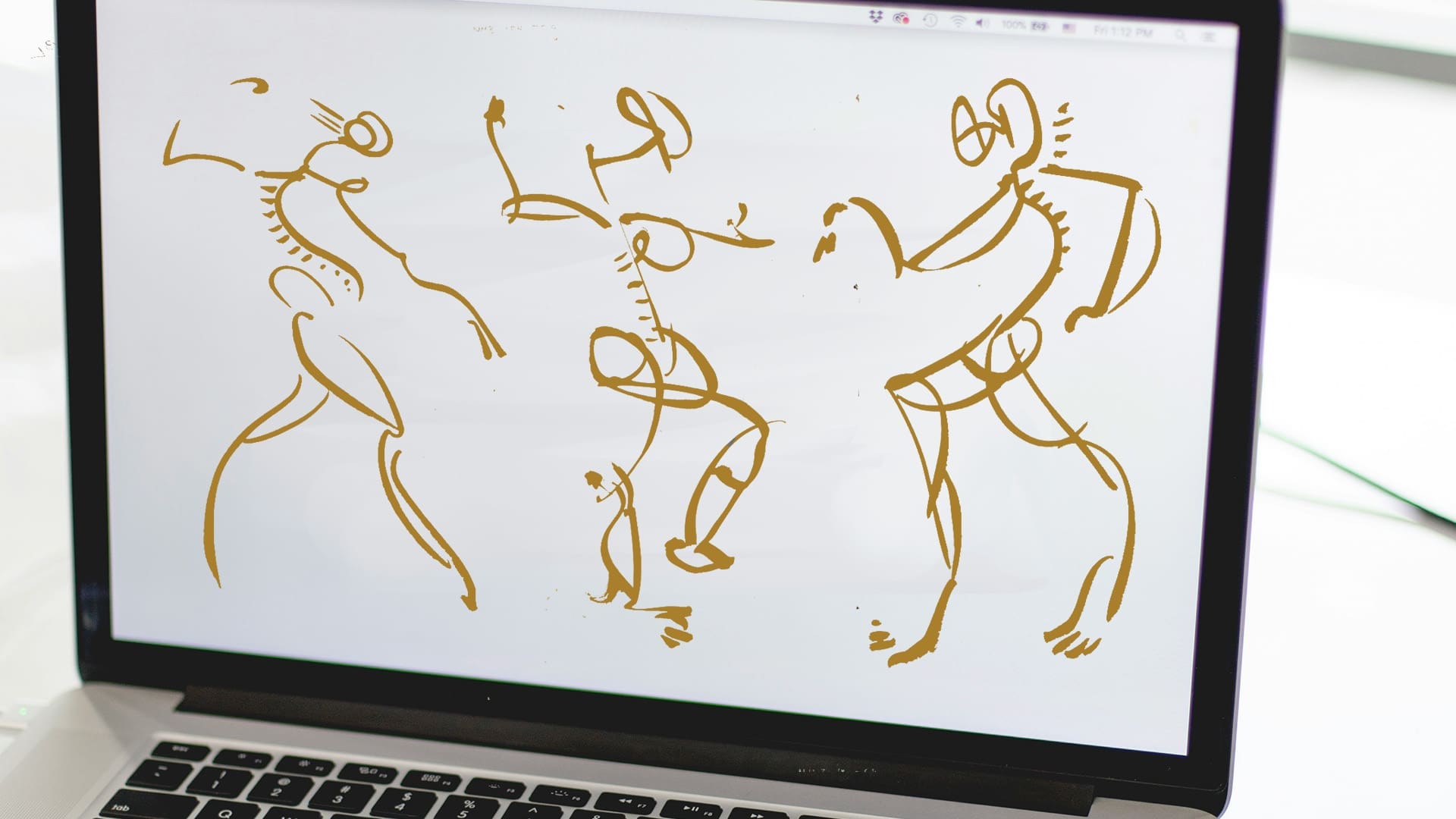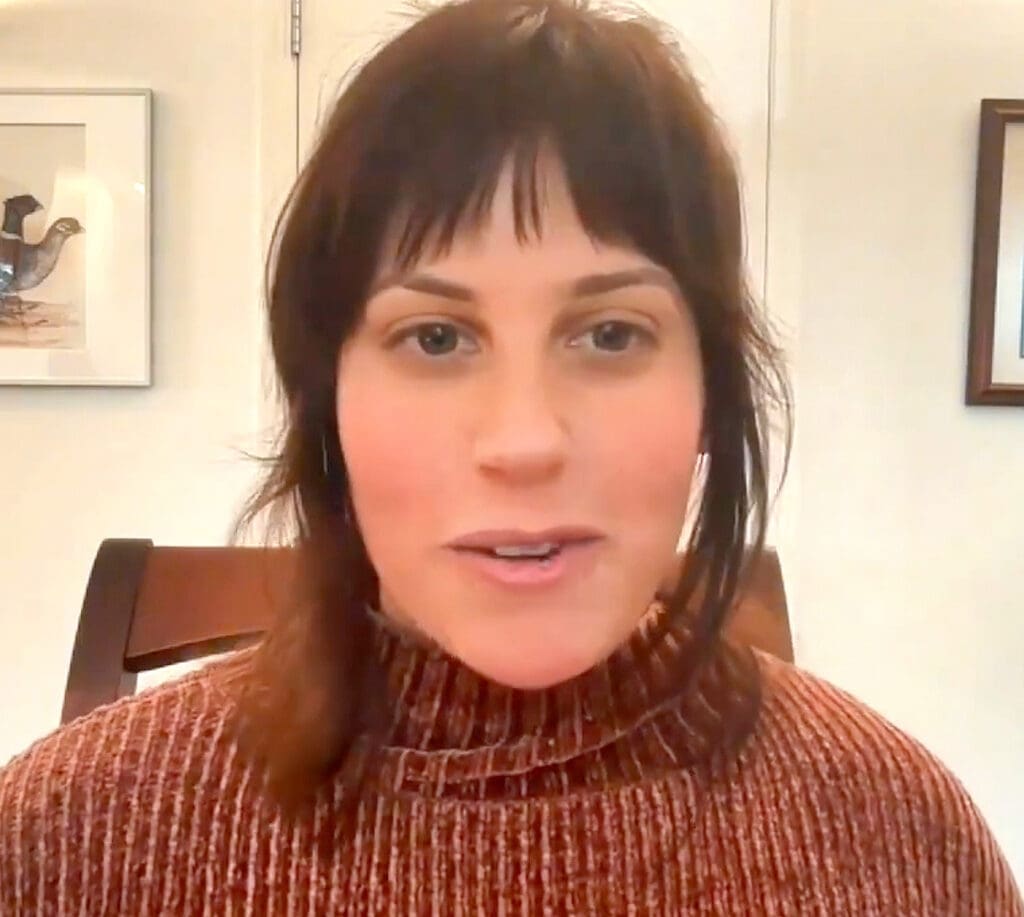M
My mom likes to say it was the laptop.
Sometimes it’s “that laptop” and other times it’s simply “the screen,” but in every retelling of the story, it’s the computer’s fault. The computer, for her, is a character in the story, almost a person.
My mother tells the story like she, “she” being the computer, was a bad influence, like a kid she knew was bad news from the start but was powerless to stop. From her view, one of the biggest mistakes in her parenting was allowing “that computer” to swallow up my childhood, the childhood that would eventually become my adolescence and young adulthood. The computer casts a shadow on my upbringing like the memory of an overly precocious friend who got me into smoking cigarettes and eventually Mary Jane. It could have been worse—it could have been heroin—but then it also could have been better.
My mother thinks that the computer made me like this, made me like that. The way I was prone to disappearing upstairs during family gatherings while her other daughters helped with dishes and asked people how their days were going, with wide-eyed sincerity, not faking it, not just passing the time, not just eager to get back to their bedrooms. The way I would flinch at the sound of my dad chewing at the dinner table or how, even today, I often seem possessed by stories about people and places she doesn’t understand because who would?
My mother loves me, and she loves spending time with me, she assures me; and I believe her. But—there’s always a but when we’re talking to our mothers—I was once ebullient and funny and social. A little girl who, during her ballet recital, broke free from our practiced routine to twirl and leap across the stage in my own invented dance, the audience’s laughter drowning out the horror of those poor teachers. Now I am withdrawn, alternating between not speaking at all or speaking in riddles; I argue about things no one understands; I seem to exist slightly out of phase with the world she and my sisters were born into.
“It’s that computer. I never should have allowed it into the house.”
Growing up, I always resented the computer as origin story for my social failures. The machine hadn’t created my awkwardness, I demanded again and again. The computer, and really the internet, had offered me sanctuary. One might as well ask why a drowning person prefers air to water. The answer, I always thought, dissolved the question. Things weren’t so great out here, so I don’t know why I wouldn’t have gone there.
Time has passed. My behaviour hasn’t changed much in adulthood, and I see now, though somewhat insecurely, what she saw then, what she still sees. A predisposition toward strangeness may have been encoded in me from birth—the apple doesn’t fall from the tree, I remind her—but the computer altered its expression. It changed its texture.
I wasn’t just a “weird kid.” I was a weird kid who was conditioning herself to respond to a fundamentally different environment from the one my mother thought she was raising me in. The dilemma wasn’t predicated on rudeness, on behaviour: it was playing out in the privacy of my own mind.
Asking a Fish How It Swims
Parental anxiety about new technologies is part of a long tradition. Anxieties that, while sometimes devolving into moral panics that are obnoxious at best and censorious at worst, are never entirely unfounded. My mother’s accusations about the way I used the internet had more than a kernel of truth, just as it’s also true that many of us tune out the world around us in favour of our smartphones.
We know this, though, that the internet and the tools we use to access it have profoundly affected our psychology. We talk about it all the time and in great detail. For instance, there is widespread belief in internet-induced ADHD. This isn’t just a turn of phrase or an example of language becoming over-medicalized. When we say the internet “gave us” ADHD, we mean that the internet conditioned us to think differently. The internet has fractured our attention spans over time. Push notifications, infinities of open tabs, the incessant toggling between apps—we can no longer focus on one “window” at a time, both literally on the screen and metaphorically in our lives.
In a 2015 piece in the Washington Post, journalist Caitlin Dewey reported on a provocative hypothesis from University of Chicago psychologist Michael Pietrus. She wrote, “Maybe these aren’t just Internet-age annoyances but something approaching an actual pathology. . . . The Internet, it turns out, incentivizes the exact types of behaviors and thought processes that characterize ADHD.”
That same year, another internet condition, or at least one induced by internet-connected devices, was being formalized in medical literature: virtual autism.
French psychologist Serge Tisseron proposed that children who were exposed to constant digital interaction might exhibit symptoms resembling those of autism spectrum disorder. While the “iPad kid” phenomenon had existed for years prior—and persists to this day—now it was receiving clinical recognition. It is a controversial theory still, but the mounting evidence of screen time’s impact on not only childhood development but also adult cognition has become increasingly apparent.
Research from Israel’s Shalvata Mental Health Center underscores the complicated relationship between tech and mental health. Researchers documented cases where individuals with no prior psychiatric history developed psychotic symptoms during periods of intense online engagement. Their “hyperpersonal” online relationships became all-consuming, demonstrating how our minds can adapt to virtual spaces. One patient reported physically feeling her online chat partner’s touch. She physically felt him, reporting, “I actually felt his hand touching me . . . on my stomach.” Another began interpreting a man’s regular Facebook posts (such as public video clips) as secret messages meant only for her, believing that the “colors, words, and music” contained hidden intimate meanings. She became so absorbed that “correspondence with him occupied most of my day.”
These online relationships became so overwhelming that patients lost touch with the basic limitations of virtual interaction, developing not just emotional fixations but also sensory experiences that defied physical reality. One reading of such cases is that they represent psychosis and environments in which it is triggered. Another is that we’re underestimating how profound the internet’s effects really are.
Experience Blockers and Perception Shapers
Communication technologies have long been theorized to reshape our perception; indeed, this is the central focus of the field of media studies.
In 1935, Walter Benjamin explored how film and photography introduced new modes of perception defined by constant stimulation and rapid change. Marshall McLuhan—the prophet of how media alters human perception—argued that the phonetic alphabet reorganized human consciousness, fostering linear and sequential thinking. Neil Postman, in his 1985 book Amusing Ourselves to Death, warned that television transformed public discourse into entertainment, diminishing critical thinking in society. In 1978, Jerry Mander described how television altered our relationship with reality, conditioning us to interpret experiences as quick, fragmented visual snapshots. Recently, Jonathan Haidt has suggested that smartphones may act as “experience blockers” to developing children, disrupting their engagement with the world, and—in the case of young girls—have significantly contributed to a spike in adolescent depression. For Haidt, this has culminated in a crusade against “screen-based childhoods” and, presumably, adolescence and young adulthoods.
Research has already established that internet use can produce ADHD-like and autism-like symptoms in “healthy” individuals as well as exacerbate pre-existing mental health conditions like borderline personality disorder (BPD).
There is even some evidence that mentally ill people are more likely to exhibit excessive internet use. For example, a 2011 study found internet addiction correlated with symptoms ranging from anxiety to depression to psychosis, though it couldn’t determine whether these traits preceded or resulted from internet use. A 2017 study of five hundred college students in Taiwan found a more complex relationship: those with BPD traits were more likely to show signs of internet addiction, with mental health problems like depression and anxiety appearing to mediate this relationship. While the study couldn’t establish causation, it theorized that people might use the internet as a way of coping with psychological distress, potentially reinforcing both the distress and the internet use.
But just as we’ve come to understand that the internet might both attract people with ADHD-like traits and intensify those traits in neurotypical individuals through its design, we might be seeing a broader pattern not of mental illness but of psychological adaptation. We acknowledge that our digital environment is changing our perception—I’m hesitant to use a phrase like “rewiring our brains,” however true that may occasionally be—but we treat the resulting changes as individual medical conditions requiring personal intervention. Millions now happily and enthusiastically take stimulants for ADHD symptoms they themselves believe were “internet-induced.” We are medicating ourselves to manage the cognitive demands of a digital-first life, but what if these “symptoms” are necessary adaptations to our environments?
It’s as if we’re living under water but treating gills as a disease. The fight is between two ecosystems that require different survival skills. Do we live under water, or do we live on land? And is there a path forward that will enable us to thrive in both environments?
These adaptations manifest themselves in three familiar archetypes in internet culture—what I’m calling the Borderline, the Autist, and the Schizo—and exist on a spectrum. Each represents a distinct way of adapting to the internet’s landscape, in what I term internet overexposure syndrome (IOS). On one end is the Schizo archetype, characterized by social anxiety, magical thinking, and ideas and delusions of reference. On the other end is the Borderline archetype, characterized by emotional dysregulation and intense fear of abandonment. At the centre lies the Autist archetype, which shares features with both.
Each archetype represents a distinct way of responding to the internet. The Schizo sees meaningful patterns everywhere—the TikTok at exactly 11:11, the podcaster seemingly speaking directly to them, the barrage of perceived subtweets. The Borderline’s pattern recognition focuses intensely on emotional and interpersonal dynamics in the white space of mediated communication. The Autist approaches online patterns systematically and analytically.
These adaptations are reasonable responses to an abnormal environment. The internet presents us with unprecedented patterns of information, social interaction, and stimulation. So we develop new ways of filtering, processing, and responding to it—ways that may look similar to existing psychiatric categories.
However, I hypothesize that when people experience distress from these adaptations and search for explanations online, they encounter diagnostic labels. Through a combination of the normalization of self-diagnosis and what philosopher Ian Hacking calls a “looping effect,” they begin interpreting their internet-adapted behaviours through psychiatric conditions like ADHD, autism, or borderline personality disorder. This framing can lead them to understand their experiences through these clinical lenses and even unconsciously amplify traits associated with these conditions.
IOS suggests that rather than the internet “causing” mental illness, we are seeing natural adaptations to digital life that superficially resemble clinical presentations but that, ironically, may end up being diagnosed because of our culture around mental health.
Here, then, follows a fuller description of each of the three types.
To be an internet celebrity, you need to be a good systems thinker, not a traditionally charismatic person. The skills that make someone magnetic in person are not the same as those that make them captivating online.
The Autist
Marshall McLuhan believed that “when you give people too much information, they instantly resort to pattern recognition to structure the experience.” This, in his view, was the role of the artist: to find the patterns.
While the internet attracts systematic thinkers and indeed was built by them, it also forges them through its informational violence. Bombarded by information from “all directions and all at once,” in the words of McLuhan, we seek structure. The internet forces us to search, consciously or not, for anything that promises to make the chaos coherent—to pattern-match. This explains the appeal of fandom as much as the appeal of authoritarian ideologies: they both promise a frame through which to view the world and filter out the noise.
Success online demands a specific kind of intelligence, and the price of mastering the internet’s systems and patterns is often paid in our capacity for physical-world interaction. As we strengthen one muscle, the other atrophies. Increasingly, we view all interaction through this systematic lens. This dynamic explains why those who are popular online often falter in physical-world situations: to be an internet celebrity, you need to be a good systems thinker, not a traditionally charismatic person. The skills that make someone magnetic in person are not the same as those that make them captivating online.
On TikTok, a teenage girl shares her journey of realizing her fictosexual identity, someone who experiences attraction to fictional characters. Her “coming out” story begins with what she identifies as a crush on a co-worker. But rather than describing romantic feelings, she details an overwhelming drive to learn everything about him, to master knowledge of him as if he were a subject to study.
The way she describes attraction isn’t attraction at all: it is hyper-focus.  After her co-worker’s rejection, the girl describes a dream she had about Arthur Fleck from the movie Joker. She is in love again. What’s revealing here isn’t delusion—she knows the Joker isn’t real; most fictosexuals acknowledge that the objects of their affection aren’t “real” in the sense you and I are real. They claim deep emotional connections while treating these characters as systems to be mastered. Though this doesn’t describe every fictosexual, for ones like the girl in the video, “love” manifests itself not as reciprocal but rather in knowledge-seeking as opposed to emotional resonance.
After her co-worker’s rejection, the girl describes a dream she had about Arthur Fleck from the movie Joker. She is in love again. What’s revealing here isn’t delusion—she knows the Joker isn’t real; most fictosexuals acknowledge that the objects of their affection aren’t “real” in the sense you and I are real. They claim deep emotional connections while treating these characters as systems to be mastered. Though this doesn’t describe every fictosexual, for ones like the girl in the video, “love” manifests itself not as reciprocal but rather in knowledge-seeking as opposed to emotional resonance.
In this environment, intensely studying information about someone can feel like forming a connection, and it’s understandable why a young woman might mistake this for a “crush.” This pattern increasingly appears online. Young people confuse their deep interest in understanding others with romantic attraction. Such hyper-focus is common and encouraged online, both culturally and by platform design. And, naturally, it extends to unexpected subjects.
This hyper-fixation differs from intense interest patterns in the Borderline archetype, though. For the Autist, intense interests—even in specific people—typically emerge as part of information gathering and categorization. These interests remain stable and predictable, often helping make social interactions more understandable. The young fictosexual woman’s story shows that her “crushes” could have manifested themselves as anything, from European history to badminton. They just happened to focus on fictional characters and, in one case, a person.
This systematizing impulse appears throughout the internet, from cyberchondria, where individuals obsessively research symptoms online, finding evidence of sickness within themselves, to the gender war discourse dominating social media. In the latter, the manosphere and femosphere (coinage my own) create elaborate taxonomies of human behaviour, reducing complex dynamics to binaries. While the gender war reflects real social tensions, at its core it represents the overdetermination of human nature—a style of binary thinking characteristic of the internet.
While the Autist finds genuine patterns but may interpret them too rigidly, the Schizo sees patterns that might not exist at all, finding hidden meanings everywhere.
The Schizo
Online, algorithms manufacture coincidences, surveillance is real, and cryptic messages abound—making it increasingly difficult to distinguish between paranoia and legitimate pattern recognition when finding personal meaning in seemingly random events.
Health-care providers are noticing—and struggling with—adaptive schizotypy too. In a 2023 Los Angeles Times opinion piece, psychiatrist Alaina Burns describes the growing difficulty of distinguishing between clinical delusions and rational responses to our contemporary media environment. “More and more I find myself twisting into cognitive and linguistic pretzels,” she writes, “trying to help my patients (and myself) determine where we draw the line between psychosis and reality. . . . Yes, it is true: Your phone is listening to you, the camera on your laptop is watching you and the advertisements you see online are predicting what you will buy.”
But what we’re witnessing isn’t a wave of full-blown schizophrenia and thereby psychosis, as the Los Angeles Times’ headline, “I treat schizophrenia. It’s getting hard to distinguish its delusions from our digital reality,” suggests. The internet does not cause the profound break from reality characteristic in people with schizophrenia. Instead, we’re seeing the emergence of perceptual shifts that more closely resemble schizotypal thinking. Where the Autist archetype might document concrete patterns that lead to questionable conclusions, the Schizo archetype perceives symbolic connections and synchronicities. 
The difficulty of interpreting reality in our digital age was crystallized for me during an unsettling experience while listening to a podcast. The host suddenly began to comment on me, personally. The broadcast was, in a very literal sense, “talking to me” (and about me). It was jarring—after all, this person was very famous, and I wasn’t famous at all. Yet there it was, unmistakably real.
This experience sparked a deeper realization about how we process messages and meaning in the modern world. In traditional clinical understanding, interpreting media as containing personal messages suggests some level of disordered thinking. People who describe songs as personally “meant” for them have historically been viewed with skepticism. But now it’s more complicated. Was that song meant for you really? Maybe. Online, personally targeted messages do exist.
Content creators address specific individuals, algorithms serve us personally curated content, and media speaks to us individually, both implicitly and explicitly. When algorithms track our behaviour and serve personalized content, they create genuine patterns that mirror our unconscious tendencies. Think about buying a house, and your feed fills with real-estate content; have a relationship conflict, and relationship-advice videos appear. Sometimes it can rise to the level of symbolic significance: after seeing repeated motifs in our feeds, we suddenly notice the same symbols everywhere in our daily lives. The butterfly, the specific number sequence, the song lyrics that keep appearing . . . They may have always been present in our environment, but the algorithms’ amplification primes us to notice them, imbuing ordinary coincidences with an almost mystical weight.
This epistemological ambiguity creates a uniquely challenging environment for maintaining reality testing. When messages really are hidden in plain sight, how do we calibrate our pattern recognition? Once you realize that indirect communication is common, that people regularly encode private messages in public posts, and that you may sometimes be the target of it, you start seeing potential hidden meanings everywhere. What looks like paranoia (“Everyone’s posting about me!”) might sometimes be accurate pattern recognition.
The very adaptation that helps us navigate these complex social dynamics can evolve into hypervigilance. While in some people the internet merely strengthens the pattern-seeking muscle, in others it overtrains it beyond its useful limits. Different minds process these patterns in different ways: some might build their case through documented evidence, while others might sense connections through less tangible means—recurring themes, symbolic connections, or meaningful timestamps. The internet effectively erodes our traditional ability to distinguish between actual and imagined significance, creating an environment where paranoid thinking becomes partially adaptive.
The internet strips away physical context and body language, forcing us to develop new ways of meaning-making and interpretations of subtle social cues. Our resulting descent into a “vibes-based” world isn’t just a cultural shift but also an important signal about our media environment. Without traditional sensory cues, we must rely more heavily on imagination and intuition to understand what’s happening around us.
This is the internet: it demands a disposition that appears “sick” in the physical world.
Media theorist Clinton Ignatov writes in his blog, Less Mad, about how the nature of online communication compounds this shift through its inherent fragmentation. Like a pointillist painting, meaning emerges only when we step back and let our minds connect disparate dots: tweets, posts, shares, and likes scattered across multiple platforms and conversations. These connections form in three ways: intentional signalling (as with subtweets targeting specific individuals), algorithmic curation (personalized content feeds and targeted ads), and organic emergence (patterns of speech and shared references, like memes appearing simultaneously across platforms without clear origin). Each fragment becomes a potential clue to larger meanings, demanding both systematic documentation and intuitive interpretation.
The Schizo archetype goes beyond information processing. A person navigating these spaces might present as superficially “disordered” in more than one sense: their writing, native to the internet, is often fragmented and dense with references, not the word salad of schizophrenia but not traditionally legible either; their affect may be inappropriate (laughing in the face of violence, for example); their understanding of social situations may lean paranoid.
But this is the internet: it demands a disposition that appears “sick” in the physical world.
The Borderline
The Borderline is as gendered online as she is off; it is a designation almost exclusively applied to women. She appears across platforms—in Twitch streams with winged eyeliner and her anime affect, on X in provocative selfies. She is the eternal e-girl, a warning and spectacle. She is vulnerable and volatile. You are attracted to her, and you hate yourself for it. There is perhaps no other online archetype as degraded and desired.
The internet manifests itself as a state of chronic, diffuse anxiety, as we are perpetually suspended between connection and rejection. It enables splitting—the cycle of devaluation and idealization—not just in its treatment of its “main characters,” the way it seems to thrive on villains and heroes, but in moment-to-moment social interactions.
This digital landscape is a social black box. Online, people are text to be interpreted, their emotions and intentions reduced to timestamps and typography. Without physical presence, without the anchoring force of body language or tone, we’re left reading meaning into how long our friends have been typing, or how frequently or infrequently they “like” our posts. Our interpretations run wild precisely because so much of what goes on occurs within our own minds—and precisely because we’re often right.
The shift from “yeah” to “yes” or vice versa, a two-hour delay instead of the usual twenty minutes, the use of exclamation points instead of periods—these minute changes can and do often signal real relational ruptures. The problem isn’t that we’re imagining things. The problem is that in learning to read these signs, we become too attuned, seeing catastrophe everywhere. Internet-based communication encourages hypervigilance, and it is crazy-making.
Sociologist Ben Agger observed how the internet imposes borderline-style relationship patterns on everyone: intense, unstable connections marked by impulsive oversharing and sudden withdrawals. This pattern emerges naturally from the medium itself. Without the natural limitations of physical presence or social cost, people can maintain constant contact. A relationship that would be constrained offline by work, distance, or social convention can become consuming online messaging all day, sharing every thought, maintaining a constant digital presence in each other’s lives. This intensity becomes normalized. When the inevitable withdrawal occurs, because of boredom, because blocking someone costs nothing, because of a real slight, it feels like abandonment rather than a return to normal boundaries.
Abandonment, as Alexander Kriss describes it in his book Borderline: The Biography of a Personality Disorder, is loss without explanation. Online, this form of abandonment is everywhere. People disappear mid-conversation; accounts go dark without warning; entire communities dissolve overnight. The internet is a land of frictionless abandonment and an uninterrupted parade of “micro-rejections,” which add up over time. Blocking, unfollowing, and ghosting require no confrontation, no explanation, no closure. 
Emotional dysregulation, too, is built directly into the architecture of the internet. Given the symbiosis of rage bait and the euphoria of internet popularity, of tragedy porn and online activism, of friendship and hate-reading or dogpiling or Instagram-stalking, it is not uncommon to be on an emotional rollercoaster while online. Your tweet about a personal tragedy sits right next to a beloved meme; your friend’s wedding photos appear alongside news of the death of a child.
This instability extends to identity itself. Where offline identity is grounded in lived experience, online identity forms through affinity and alignment. We become collections of interests, allegiances, and aesthetics. The internet’s second self becomes a curatorial project, constantly revised according to shifting community standards and platform affordances. What defines you this year—your politics, your fandom, your aesthetic—might be irrelevant, embarrassing, or even “problematic” the next. Identity becomes less about internal consistency and more about successful adaptation to rapidly changing social contexts—another form of perpetual instability.
This instability of the digital self has profound physical consequences.
The more time we spend on the internet, the more our connection to our physical selves grows tenuous. This disconnection magnifies our need for visceral experiences. Even destructive ones like self-harm become desperate attempts to feel present in our bodies again. The proliferation of body-focused content across the internet isn’t just algorithmic exploitation, though it’s that too; it reflects our yearning for the corporeal experiences we’ve lost. In a world anchored within a screen, our physical form becomes both a refuge from and a tether to reality.
The question isn’t whether we’re being paranoid or over-sensitive. The signs we’re reading are real, and these adaptations make sense for cyberspace. The question is how to survive when we’re back on land.






